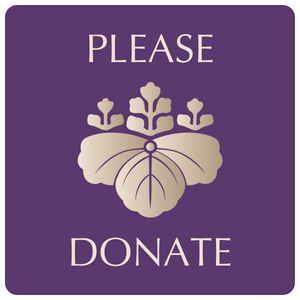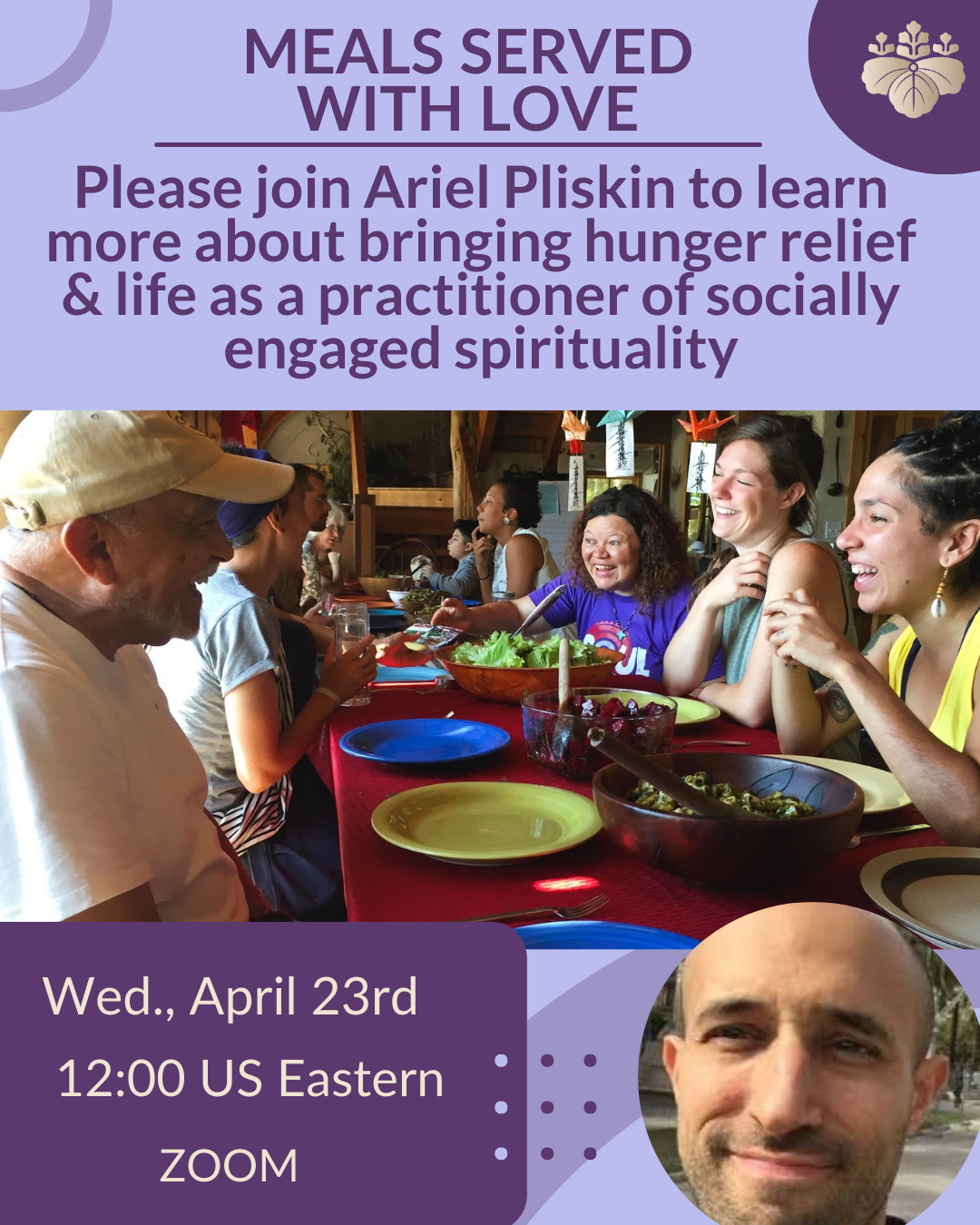In some circles Zen is viewed with suspicion. What solid ethical foundation can there be to this radical take on spirituality, which pulls the rug out from under our certainties? Leaving us nothing to hold on to, is Zen a morally neutral zone – where anything goes? At the same time, throughout the liturgy we see evidence of a rich ethical tradition. Sangemon, the verse of repentance which is chanted at the beginning of most practice periods, is an atonement for the wrongs we have committed. The Bodhisattva precepts which we recite regularly, have a strong ethical dimension – and how could one forget our beautiful meal prayers, which encourage us to nurture a practice for the benefit of all beings.
‘We are thankful for this food, The work of many people and the sharing of other forms of life. May we eat it without greed, for the salvation of all beings and attainment of the way.’
Is there a contradiction between the shake-all attitude of Zen teachings and its morally infused liturgy – or are they in harmony? This is what we will explore in the following talk.
A short recap on the precepts
If you have practiced with us at Sun Mountain Zen, or visited almost any other Zen centre, you will have recited the Sixteen Bodhisattva Precepts. They are of course made up of:
- The Three Refuges (taking refuge in Buddha, Dharma and Sangha),
- The Three Pure Precepts (Do no harm, Do good, Save all beings) and
- The Ten Grave Precepts (a kind of Buddhist Ten Commandments, traditionally framed in a negative way, but we now incorporate the Zen Peacemakers formulation, which includes their positive aspect).
Three perspectives on ethics
Toward the end of our Zen training and after working through the seven hundred or so Koan’s in our curriculum, we engage in precept work. I have heard some teachers say it would be better to include precepts earlier in the curriculum – but that is how it is currently^. In Dokusan, we are asked to consider the precepts from three interwoven perspectives: the literal, the subjective, and the ultimate – and present our understanding to our teacher.
For explanations sake, we will do this through consideration of just one of the precepts: ‘Don’t speak of another’s faults’.
- The Literal Perspective – this is the ‘letter of the law’, fixed and immutable: a commandment we must follow. According to this perspective – you just never do it! This is of course a tall order, and we will never quite achieve it, but we continue to try.
- The Subjective or Mahayanna Perspective – this is the ‘spirit of the law’. It’s guided by the fundamental principle embodied in the precept and not attached to a fixed interpretation. This is wise action; so, from this perspective, you might speak of another person’s faults skilfully and as a way of helping that person to alter their behaviour, whilst at the same time seeing that these ‘faults’ are ultimately empty – there is only the perfection of the person standing before you – another buddha.
- The ultimate perspective is things just as they are. No subject nor object from this perspective. No other at fault and no-one there to judge them – just the ‘one-body’, as Roshi Bernie Glassman might say. This one-body is not bound by intellection and must be experienced to understood. Concepts only reflect it poorly and often parable and poetry are much better at evoking it.
As an aside, this one-body perspective is wonderfully described in the New Testament exhortation on giving: ‘when you give to someone in need, don’t let your left hand know what your right hand is doing’ (Matthew 6:3) Which I think speaks to the same experience of non-duality. Two hands moving as one, with no thought of themselves as hands and no thought even of giving – just one movement of compassion.
An analogy
Really of course, as the New Testament example alludes to, the three perspectives are not separate and the following analogy I think describes this.
It’s like learning to fly a plane:
- To learn the rules of flight, we must follow them strictly and if we do, they will help us get up in the air as a beginner pilot and land safely. This is the literal perspective.
- Using the rules as a basis, we learn how to make decisions and with greater skill and can adapt to or even bend the rules (for example in an emergency where we have a broken wing) to maintain the function of flying. However, we are still to a degree utilising a framework to guide our flight. This is the subjective or Mahayanna perspective.
- Once we’ve embodied the rules completely and become an expert, we are one with the activity – rules are forgotten – we just fly. This is the natural way of things and more than us doing the flying, we are flight itself – just SWOOSH! This is of course the ultimate perspective.
Ethics at the heart of practice
The beating heart of Zen practice is beautifully summed up in the Song of Enlightenment by Yoka Daishi which I would encourage everyone to read. I will only repeat a couple of stanzas here. We often recite it during our weeklong Sesshin each afternoon and it is one of my favourite Zen poems.
When we realize actuality,
There is no distinction between mind and thing
And the path to hell instantly vanishes.
If this is a lie to fool the world,
My tongue may be cut out forever.
Once we awaken to the Tathagata-Zen,
The six noble deeds and the ten thousand good actions
Are already complete within us.
In our dream we see the six levels of illusion clearly;
After we awaken the whole universe is empty.
This perspective is one of experiencing the underlying reality of things, which as you can see is profoundly moral. Ethics from this viewpoint are not a set of rules dictated to us from on high, but the very truth of our interconnectedness, the true self. We of course will at times err and stray from this, but underlying there is always the opportunity to atone; to be at-one as the etymology of the word suggests; and reconnect with the awesome, boundless whole.
One level completely contains all levels;
It is not matter, mind nor activity.
In an instant eighty-thousand teachings are fulfilled;
In a twinkling the evil of eons is destroyed.
^Actually in our Sanbo Zen tradition, earlier on in our training we may be given a practice of working with just one of the precepts and treating it like a Koan – holding it in front of us much as we can and examining all our interactions and behaviours through it. A bit like an examination of conscience, but with a laser focus. I think it was Yamada Koun Roshi said about this type of practice – ‘if you really understand just one of the precepts, you understand them all’.
Photo by Riccardo Ginevri



